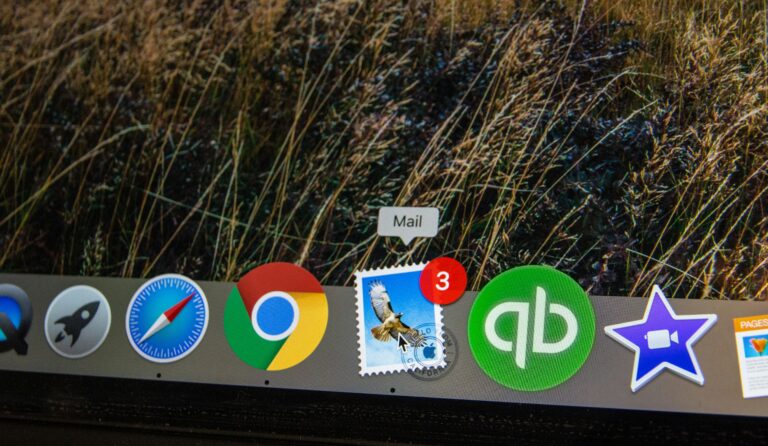In the digital era, where distances are reduced to the length of a single click, it’s never been more important to harness the power of social platforms such as Facebook. Especially when it comes to nurturing our relationships with loved ones. But how does one navigate the complexities and nuances of such a vast platform to achieve a closer connection with friends and family?

In a world of constant change and technological advancements, understanding and effectively using Facebook can often feel like mastering a whole new language. But fear not. This guide aims to serve as your personal interpreter, unraveling the mysteries of the platform and providing you with the tools to effectively communicate with loved ones, no matter the distance.
We’ll delve into the intricacies of Facebook’s multiple features, such as creating engaging posts, sharing moments through stories, and utilizing video calls to bring you closer to your loved ones. We’ll also explore how to safeguard your privacy, ensuring a secure and safe environment for you to connect and share.
Moreover, understanding Facebook’s ever-evolving algorithms can be quite a task. Hence, we’ll touch upon how to ensure your posts reach your loved ones and how to stay updated with their lives. By understanding these algorithms, you’ll be able to tailor your Facebook use in a way that strengthens your bonds and fosters better communication.
Navigating Facebook shouldn’t be a daunting task. With the right guidance and understanding, it can become a powerful tool to connect and foster stronger relationships. So, let’s take this journey together, making Facebook a platform of love, connection, and shared memories.
Understanding Facebook’s Algorithm
The first step in mastering Facebook to strengthen relationships with loved ones is to understand how its algorithm works. Facebook uses a complex algorithm that prioritizes content based on relevance to the user. The algorithm takes into account several factors, including how often you interact with a particular person, the number of likes, comments, and shares a post receives, and the type of content (video, photo, link, or text).
By understanding how this algorithm operates, you can tailor your posts and interactions to increase their visibility and engagement. For instance, posting pictures or videos, which typically generate more engagement than text posts, can help your content rank higher in your loved ones’ feeds.
Strategically Utilizing Features
Facebook is more than just a platform for posting updates—it is a comprehensive suite of tools designed to enhance communication, encourage interaction, and strengthen relationships across distances. When used intentionally, Facebook’s diverse features can serve as powerful mechanisms for deepening connections, increasing visibility, and creating shared experiences in meaningful and memorable ways.
By understanding and strategically utilizing these features, users can go beyond passive scrolling to actively cultivate their digital relationships. Whether you’re connecting with a small circle of close friends or sharing moments with a broader network, leveraging Facebook’s interactive elements can bring your social presence to life.
Tagging
One of the simplest yet most effective tools on Facebook is tagging. Tagging allows you to mention or highlight another user by name in a status update, comment, photo, or video. When someone is tagged, the content is not only shared to your own timeline but also becomes visible on the tagged person’s timeline (depending on their privacy settings), and they receive an instant notification alerting them to the post.
This has several strategic benefits:
- It ensures that the tagged individual sees the content, even if they might have missed it in their general feed.
- It increases engagement, as tagged users are more likely to respond with a like, comment, or share.
- It broadens visibility by potentially exposing your content to the tagged individual’s friends and followers, thereby reaching a wider audience.
- It makes your post more personal and interactive, signaling that the content is relevant to someone specific.
Tagging is especially useful in shared experiences such as outings, group photos, inside jokes, or collaborative projects. It also allows for smoother organization of photos and posts when documenting memories with others.
Facebook Live
Another dynamic feature that can significantly elevate your digital presence and personal outreach is Facebook Live. This tool enables users to broadcast real-time video to their Facebook friends, followers, or the public, depending on your settings. With just a few taps, you can share live footage of an event or moment as it unfolds, creating an immediate and immersive experience for viewers.
Facebook Live is ideal for:
- Sharing family gatherings with relatives who live far away.
- Streaming special occasions, such as weddings, birthdays, or graduation ceremonies, for those who cannot attend in person.
- Hosting Q&A sessions, celebrations, or virtual meet-ups in real time.
- Capturing spontaneous moments, like a child’s first steps or a breathtaking sunset, and instantly sharing them with loved ones.
Viewers can react, comment, and interact with you while the video is streaming, fostering real-time engagement and emotional connection. After the live session ends, the video is automatically saved to your timeline, allowing others to watch it later and continue engaging.
To use Facebook Live strategically, consider:
Saving the video for future viewers and ongoing engagement.
Announcing your live stream in advance so people know to tune in.
Interacting with comments during the broadcast to create a two-way conversation.
Adding a description and relevant tags to increase visibility and reach.
Effective Communication

In the realm of social media, communication is more than just broadcasting information—it’s about fostering meaningful interactions and nurturing relationships. On Facebook, one of the world’s most widely used platforms for personal connection, effective communication plays a pivotal role in how we engage with our social circles, stay emotionally connected, and build lasting bonds with family, friends, and colleagues.
Effective communication on Facebook involves intentional engagement, not just passive content consumption. While posting photos, status updates, or sharing interesting links is one form of interaction, the deeper value lies in the reciprocal exchanges that follow. This includes liking others’ posts, leaving thoughtful comments, participating in discussions, and acknowledging the experiences shared by those you care about. These actions signal interest, empathy, and presence in the lives of others—even when you’re physically far apart.
Messaging
One of the most powerful tools for private interaction on Facebook is its Messenger service. Facebook Messenger enables real-time, one-on-one or group conversations and is available as both a standalone app and an integrated feature within the Facebook platform. This messaging tool supports a wide range of communication features:
- Text messaging for everyday conversations.
- Photo and video sharing to send memories, moments, and media.
- Voice and video calls for more personal, face-to-face communication.
- Stickers, emojis, and GIFs to add expressiveness and humor.
- Reactions and message replies to quickly respond or acknowledge specific messages.
- File and link sharing to coordinate tasks or send important information.
Regularly checking in with your loved ones through Messenger can strengthen emotional ties, provide comfort and encouragement, and maintain a sense of closeness, especially when in-person meetings are rare or impossible. Messenger also supports features like message reactions, read receipts, and typing indicators, which help make digital conversations feel more human and immediate.
Commenting
While private messages offer intimacy, public engagement through comments on posts is another crucial form of communication that fosters community and connection. Commenting on someone’s status update, photo, or shared article is a way of saying, “I see you,” “I’m here,” and “What you shared matters.”
Thoughtful comments—rather than generic responses—encourage further interaction and can spark conversations that go beyond the post itself. For example:
- Congratulating someone on a life event (e.g., graduation, engagement).
- Offering support during difficult times.
- Sharing your own thoughts or experiences in response to their content.
- Asking follow-up questions to show genuine interest.
Such interactions show that you’re actively listening and willing to invest time and attention in your social relationships. Moreover, consistent commenting helps you stay visible and present in your network, which is especially important in the digital age, where connections can easily fade without regular interaction.
Facebook Groups
Facebook Groups are a great tool for staying connected with family and friends. You can create private groups for your family or friend circles, where you can share updates, photos, and messages that are only visible to group members. This can help create a sense of community and keep everyone in the loop.
Creating Events
In Facebook Groups, you can also create events, such as family reunions or birthday parties. Creating an event allows you to invite all group members, track RSVPs, and post updates about the event.
Managing Privacy Settings
As social media continues to play an increasingly central role in our daily lives, privacy management has become more important than ever—especially on platforms like Facebook, where personal information, opinions, photos, and life events are frequently shared. Facebook offers a variety of privacy settings that empower users to control who can access their content, ensuring a safer and more comfortable social networking experience.
Understanding and properly configuring these settings can help protect you from unwanted attention, reduce the risk of identity theft, and preserve your personal boundaries. From limiting the audience for your posts to customizing who can view your personal details, effective privacy management allows you to enjoy social media with greater confidence and control.
Profile Visibility
One of the most fundamental aspects of Facebook privacy is the visibility of your profile. This determines who can view your basic information—such as your profile photo, cover photo, hometown, education, employment history, and friends list. Facebook allows you to customize this visibility based on your comfort level and audience:
- Friends Only: This is the most common privacy level, where only your accepted friends can view your profile details.
- Public: Choosing this option makes your profile accessible to anyone on or off Facebook, which may be appropriate for public figures or business accounts, but not always recommended for personal use.
- Custom or Restricted: You can create customized visibility rules to exclude specific individuals or groups from accessing your content. For example, you may want to block former acquaintances or unknown users from seeing your updates.
- Blocked Users: Facebook also allows you to block specific users entirely, preventing them from seeing your profile, messaging you, or interacting with your posts in any way.
By actively managing who can access your profile, you retain control over how you present yourself online and to whom your personal information is exposed.
Controlling Post Visibility
Every time you post something on Facebook, you have the opportunity to choose its audience. Facebook offers several granular options for post visibility:
- Public – Anyone on or off Facebook can see the post.
- Friends – Only your Facebook friends can view the content.
- Friends Except… – Lets you hide the post from selected individuals.
- Specific Friends – Allows you to share the post with a particular list of people.
- Only Me – The post is completely private and visible only to you.
This level of control is invaluable for managing what content is shared and with whom. It ensures that sensitive updates are only viewed by trusted connections and that broader messages are delivered to the right audience.
Using Facebook’s ‘Friend List’ Feature
One of the most underutilized yet powerful features for privacy management on Facebook is the ‘Friend List’ feature. This tool allows users to organize their friends into customized groups, such as:
- Close Friends
- Family
- Acquaintances
- Work Contacts
- Custom Lists (e.g., High School Friends, Travel Buddies)
By categorizing your contacts in this way, you can fine-tune your sharing preferences for different audiences. For example, you may want to share a personal life update only with your close friends and family, while posting general updates or public achievements to a wider audience. Friend Lists make it easy to target specific groups and avoid oversharing or disclosing information to unintended viewers.
Additionally, Facebook’s News Feed algorithm can use these lists to prioritize content, so you’re more likely to see updates from people in your “Close Friends” list while minimizing less relevant posts.
Conclusion
In conclusion, mastering Facebook is an invaluable skill in this digitally dominated era. Leveraging this powerful social media platform not only allows us to stay connected with loved ones but also strengthens our relationships through consistent interaction and engagement. It provides an avenue to share life’s significant moments, express sentiments, and maintain an ongoing conversation, effectively bridging the physical distance between us.
Facebook’s tools and features are designed to enhance our connection with others. Making the most out of them – such as the use of Messenger for private conversations, Groups for communal discussions, and the Reaction feature for emotional responses – can help us create more meaningful and interactive exchanges.
However, as with any digital platform, it’s crucial to remember the importance of digital etiquette and privacy. Respect for others’ boundaries and careful management of our online footprint are key to maintaining healthy relationships.
Ultimately, navigating Facebook proficiently is about more than just tech-savviness. It’s about understanding the art of communication in the digital age. With this mastery, we are better equipped to nourish our relationships and remain connected with our loved ones, no matter the distance.



